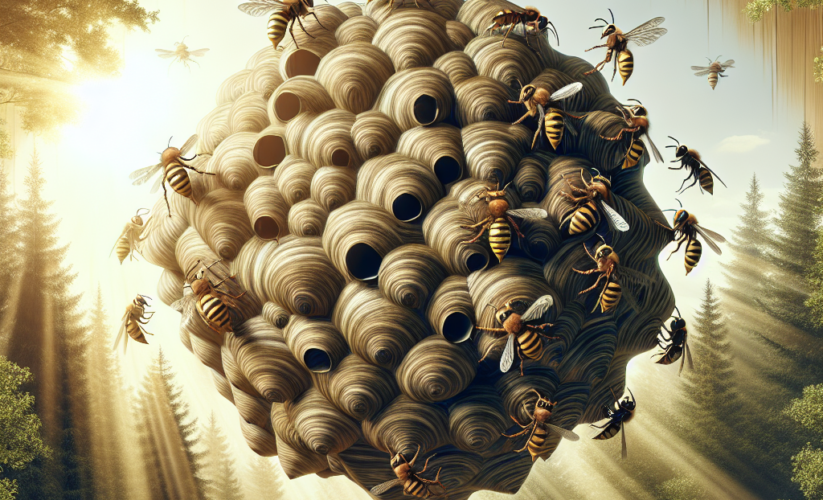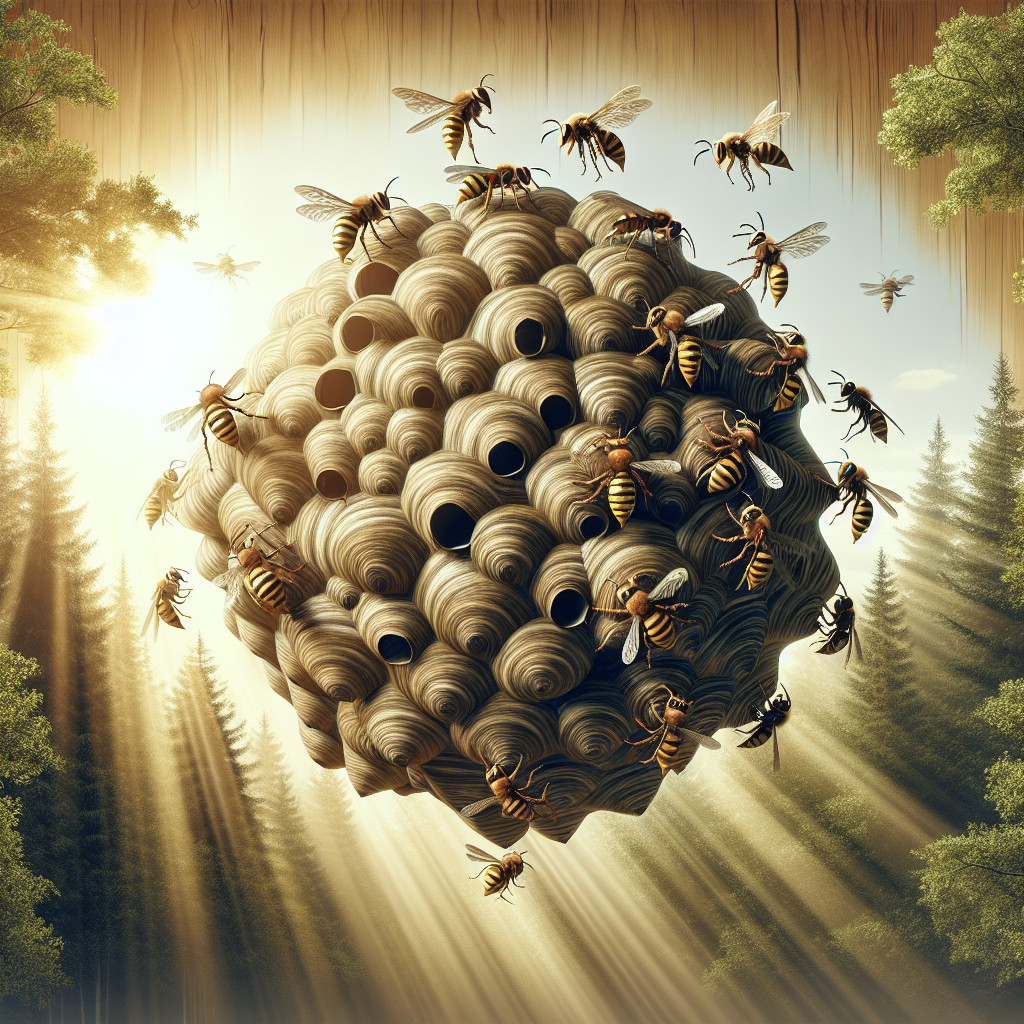
“Unlock the Ultimate Secrets of Hornissennest for Success”
Hornissennest: Insights and Impacts
Understanding the Hornissennest
The term **Hornissennest**, which translates to “hornet’s nest,” refers to the intricate habitats constructed by hornets, a type of wasp. These nests are not just simple structures; they serve as a home, nursery, and communal area for the hornet population. A typical hornissennest can contain hundreds to thousands of hornets, providing insight into the social behaviors and organizational structures of these fascinating insects. Understanding the anatomy and purpose of these nests is key to appreciating their role in the ecosystem.
The Structure of a Hornissennest
A typical **hornissennest** is made from a combination of chewed wood fibers and saliva, which hornets transform into a paper-like substance. This structure serves as a protective barrier against predators and environmental elements. Initially, the nest starts small, often built by a single queen hornet in the spring. As the colony grows, the nest expands, sometimes reaching impressive sizes, which can measure up to 12 inches in diameter. The inside of the nest is organized into cells, each housing a single hornet larva, which will eventually develop into adult hornets.

Behavioral Patterns of Hornets in the Nest
**Hornets** exhibit fascinating social behaviors within their nests. Each colony operates democratically, with a queen overseeing reproduction and workers responsible for foraging and nest maintenance. Interestingly, worker hornets display remarkable communication skills. They utilize a series of pheromones and physical gestures to coordinate activities like food retrieval and defense against intruders. This complex social structure underscores the efficiency and resilience of hornet colonies, making them a topic of interest for researchers and nature enthusiasts alike.
Common Locations and Environmental Impact
**Hornissennests** can be found in various environments, typically in wooded areas, gardens, or even attics. Their choice of location is influenced by the availability of food sources and shelter. Hornets play a crucial role in ecosystems by controlling pest populations, as they feed on flies and caterpillars. However, their presence can sometimes lead to human-wildlife conflicts, as homeowners may perceive these nests as a threat. Education and understanding are essential in mitigating these conflicts and appreciating the ecological contributions of hornets.
The Risks and Benefits of Hornissennests
While **hornissennests** bring several ecological benefits, such as pest control, they also pose certain risks, especially to humans and pets. Understanding these risks is vital for safe interactions with these insects.
Potential Risks Associated with Hornissennests
The most significant risk posed by **hornets** is their sting, which can be quite painful and, in some cases, lead to allergic reactions. Unlike bees, hornets can sting multiple times, making them a threat if they feel their nest is disturbed. In densely populated areas, a hornet’s nest may lead to increased encounters with humans, prompting concerns about stings and injuries. Awareness of hornet nesting behaviors is essential for minimizing these risks, such as avoiding areas where nests are established.
Benefits of Hornets in the Ecosystem
Despite the potential risks, the benefits of **hornissennests** should not be overlooked. Hornets serve as natural pest control agents, helping to keep populations of common garden pests in check. This is particularly important for agriculture, where pest outbreaks can lead to significant crop damage. Some studies have shown that hornets can consume large numbers of pests, thereby reducing the need for chemical pesticides. This ecological balancing act illustrates the importance of preserving hornet populations, even in residential areas.
How to Safely Coexist with Hornets
Coexistence with **hornets** requires education and proactive measures. If a nest is discovered near living spaces, respectful distance is key. If removal is necessary, contacting wildlife control or pest management experts who use humane methods is recommended. Installing screens on windows and sealing entry points can also prevent hornets from entering homes, reducing the chance of unwanted encounters. Engaging in safe practices promotes a healthy environment where humans and hornets can thrive without conflict.
Myths and Facts About Hornissennests
Many myths surround **hornissennests**, leading to misunderstandings about these insects. Addressing these misconceptions is vital for fostering a more informed perspective about hornets.
Common Misconceptions About Hornets
One prevalent myth is that all hornets are aggressive and will sting without provocation. In reality, most hornets are relatively docile unless their nest is threatened. Unlike bees, which die after stinging, hornets can sting multiple times and do so primarily in defense. Educating the public about their behavior can reduce undue fear and lead to better coexistence practices.
Scientific Facts About Hornet Behavior
Scientific research has shown that **hornets** are more than just aggressive insects; they are crucial members of the ecosystem. Studies reveal that hornets have unique foraging behaviors, primarily seeking out sugary substances and meat, making them effective pest controllers. Furthermore, their ability to communicate and work together in colonies is a remarkable aspect of their biology that highlights the complexity of their social structure.
Conclusion on Hornissennests
In conclusion, **hornissennests** and their inhabitants play a vital role in ecosystems, balancing pest populations while contributing to biodiversity. By understanding the intricate nature of these nests, the behavior of hornets, and addressing the myths surrounding them, we can foster a healthy environment that respects both human safety and ecological integrity. Embracing this knowledge allows for informed decisions on how to coexist with these remarkable insects.
Key Takeaways
- Hornissennests serve as crucial habitats for hornets, reflecting their social structure and behavior.
- Despite risks associated with hornet stings, these insects contribute significantly to pest control.
- Education is key to coexistence, helping reduce fear and promote understanding of hornets’ ecological roles.
FAQ
1. What is the best way to remove a hornissennest safely?
For safe removal of a **hornissennest**, it’s advisable to contact a professional pest control service that specializes in humane methods. Homemade remedies may provoke hornets, leading to aggressive behavior. Always prioritize safety and consider the ecological impact before removal.
2. Are hornets beneficial for gardens?
Yes, **hornets** are beneficial for gardens as they help control pest populations. Their predation on flies and caterpillars protects plants from potential damage, making them valuable allies in maintaining a healthy ecosystem.
3. How can I prevent hornets from nesting near my home?
To prevent **hornissennests** from forming near your home, seal any entry points and install screens on windows. Keeping outdoor areas clean from food scraps helps reduce attractions for hornets, making your space less inviting.
4. Do hornets sting more than once?
Unlike bees, which can only sting once, **hornets** are capable of stinging multiple times. They do this primarily in defense, so it is crucial not to disturb their nest to avoid getting stung.
5. What should I do if I get stung by a hornet?
If stung by a **hornet**, remove any stinger if present, clean the area, and apply a cold compress. Monitor for allergic reactions, especially if you have a history of allergies. Seek medical attention if severe symptoms arise.